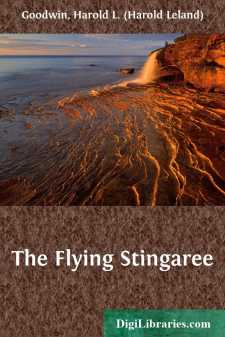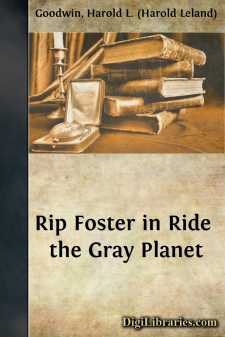Categories
- Antiques & Collectibles 13
- Architecture 36
- Art 48
- Bibles 22
- Biography & Autobiography 813
- Body, Mind & Spirit 142
- Business & Economics 28
- Children's Books 17
- Children's Fiction 14
- Computers 4
- Cooking 94
- Crafts & Hobbies 4
- Drama 346
- Education 46
- Family & Relationships 57
- Fiction 11829
- Games 19
- Gardening 17
- Health & Fitness 34
- History 1377
- House & Home 1
- Humor 147
- Juvenile Fiction 1873
- Juvenile Nonfiction 202
- Language Arts & Disciplines 88
- Law 16
- Literary Collections 686
- Literary Criticism 179
- Mathematics 13
- Medical 41
- Music 40
- Nature 179
- Non-Classifiable 1768
- Performing Arts 7
- Periodicals 1453
- Philosophy 64
- Photography 2
- Poetry 896
- Political Science 203
- Psychology 42
- Reference 154
- Religion 513
- Science 126
- Self-Help 84
- Social Science 81
- Sports & Recreation 34
- Study Aids 3
- Technology & Engineering 59
- Transportation 23
- Travel 463
- True Crime 29
The Flying Stingaree
Categories:
Description:
Excerpt
Chesapeake Bay
The stingaree swam slowly through the warm waters of Chesapeake Bay. Geography meant nothing to the ray, whose sole interest in life was food, but his position—had he known it—was in the channel that runs between Poplar Island and the town of Wittman on the Eastern Shore of Maryland. The ray was also directly in the path of an odd-looking cruising houseboat, the Spindrift, that had just rounded the north point of Poplar Island and entered the channel.
The sting ray's color was an olive brown, so dark in tone that he looked like wet black leather. He was roughly diamond-shaped, like a kite, with rounded sides. He had a long, slim tail that carried vicious barbs along the base of its upper side. It was from the barbs, which served as defensive weapons, that the name sting ray, or stingaree, derived. The ray was harmless to men—unless one chanced to step on him as he lay resting on the bottom ooze. At such rare times, his tail would lash up, inflicting a serious and painful wound.
A tiny crab, hatched only a week before, swam upward toward the gleaming surface, his churning legs making a slight disturbance. The ray sensed the small vibrations and instantly changed course, speeding through the water like a fantastic spaceship of the future. Intent on the crab, the ray ignored the stronger vibrations caused by a pair of outboard motors and a long, flat-bottomed hull. Not until the crab was within reach did the ray sense imminent danger. With a single flashing movement, he snatched the crab and flung himself upward through the shining surface and into the air.
Rick Brant, at the helm of the cruising houseboat, saw the ray break water and he let out a yell. "Scotty! Look!"
Don Scott, asleep at full length on the houseboat's sun deck, which was also its cabin top, awoke in time to see the dark shape reenter the calm water. "Stingaree!" he exclaimed.
Rick had never seen an area more teeming with life than Chesapeake Bay, unless it was the jungles of the South Pacific. Books, guides to eastern land and water birds, regional fish and reptiles, rested on the cabin top before him, along with a pair of binoculars. He had used them all repeatedly, identifying eagles, wild swans, ospreys, wild duck and geese, terrapin, snapping turtles and water snakes, as well as a horde of lesser creatures. Trailing lines over the houseboat stern had captured striped sea bass, called "rockfish" locally, a species of drumfish called "spot" because of a black spot on the gills, pink croakers that the Marylanders called "hardheads," and the blue crabs for which the bay is famous. He had seen clam dredges bringing up bushels of soft-shelled, long-necked clams that the dredgers called "manos," and he had seen the famous Maryland "bugeyes" and "skip-jacks"—sailing craft used for dredging oysters. The boats were not operated during the oyster breeding season from the end of March until September.
Rick's interest in the life of the great bay was to be expected. As son of the director of the world-famous Spindrift Scientific Foundation, located on Spindrift Island off the coast of New Jersey, he had been brought up among scientists....












